Planning on buying some snowshoes? If you're confused with what factors you have to consider when you make the purchase, these tips will help.
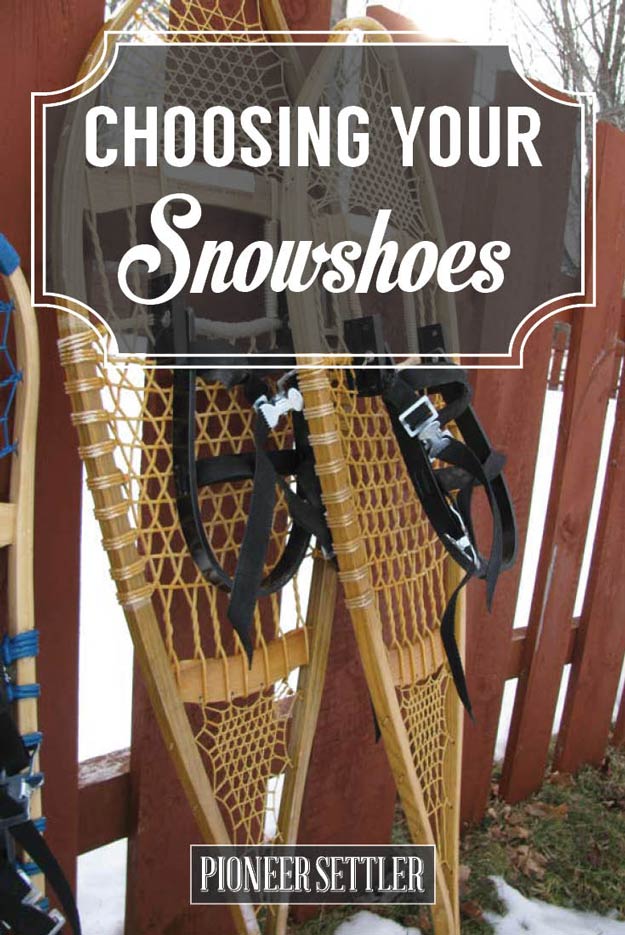
Snowshoes Guide
By Kathy Bernier
I love winter. I love the splendor of the white snow blanketing my homestead, and the stunning beauty of the nearby forest, and the peace of sitting quietly by the wood stove with a good book or a crochet project in my hands.
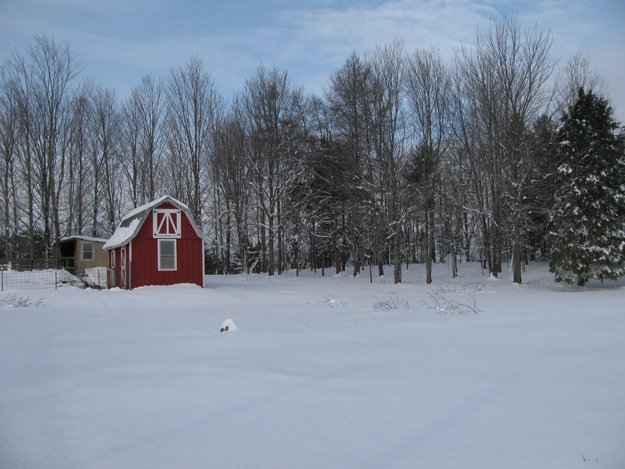
I love to get out in it, too. Spending time outdoors any time of year is always a rewarding thing to do, but in winter it has even more benefits than ever. For me, getting outdoors helps me stay active and avoid the doldrums. Life is too short to wish away any of it, and I prefer to enjoy every day I can.
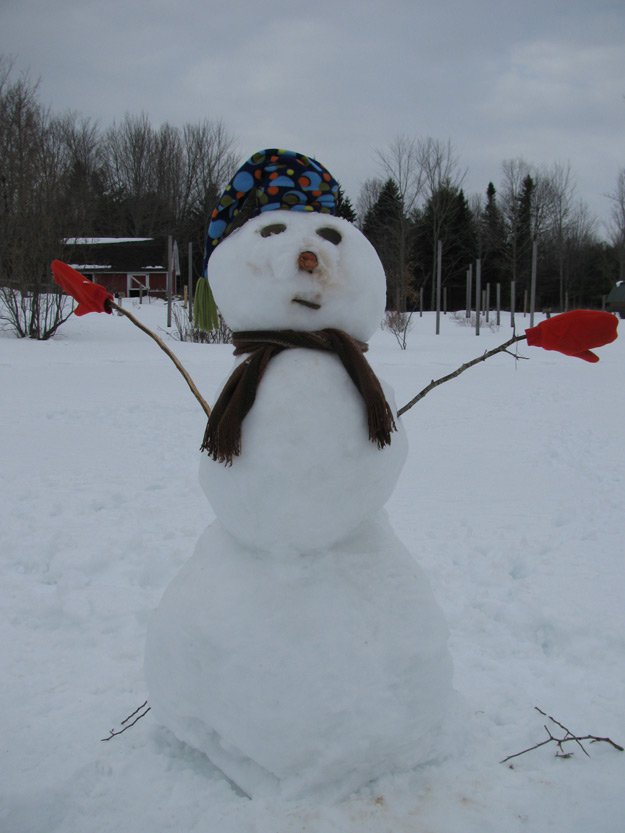
Where I live, there is usually too much snow to simply slip into a pair of rubber boots and go prancing off across the lawn. When the snow gets deep at my house, it is time for me to embark upon one of my much-loved activities.
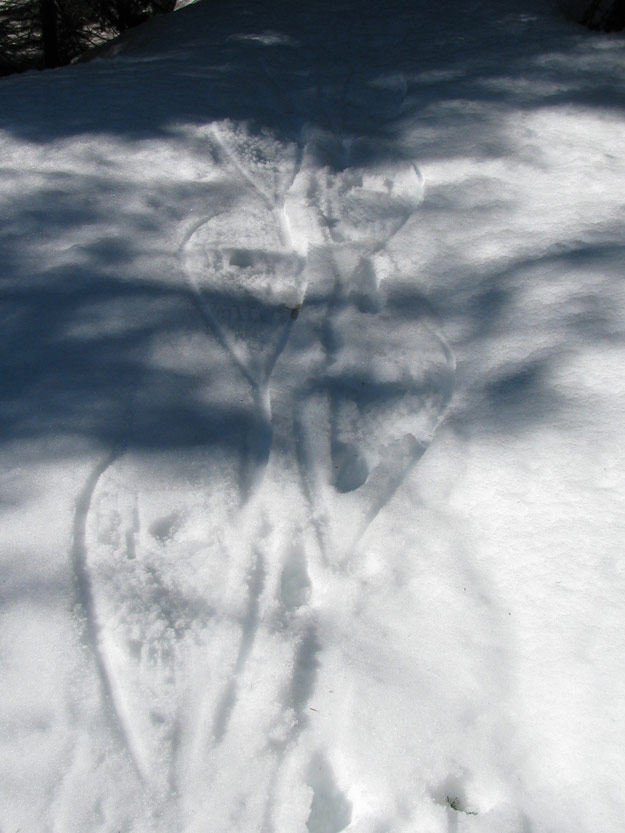
I strap on my favorite pair of snowshoes and head out into a winter wonderland. If you too are planning to spend some time in snow country and considering taking up snowshoeing, I could not encourage you more.
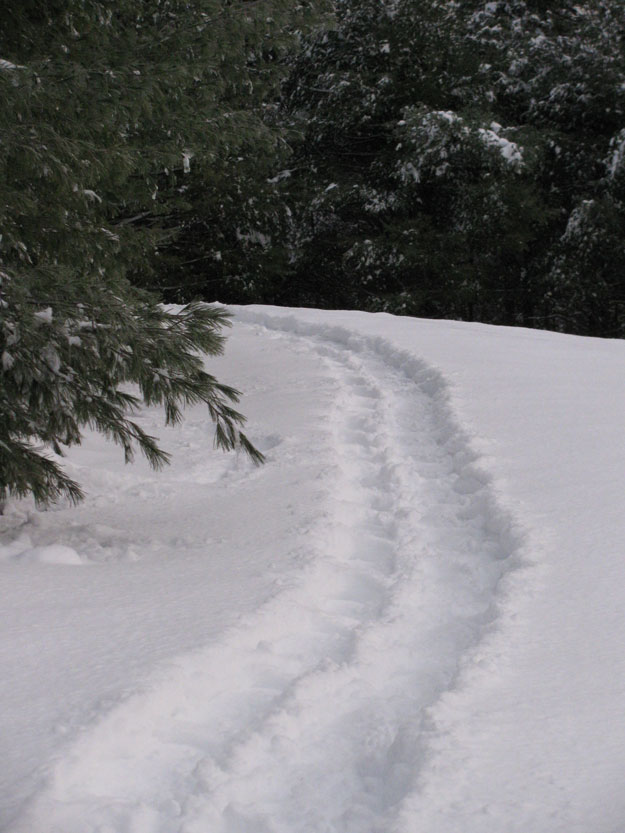
“One of my favorite pair of snowshoes?” Yes. The truth is, I own several.
As my needs, usage, and physical abilities have shifted over the years, so have my snowshoes. If you are trying to decide what ones to buy for yourself, I have a few tips that can help guide you.
Choosing The Right Snowshoes
As snowshoeing has increased in popularity over the past few decades, there seems to be a corresponding increase in the varieties and styles of equipment on the market. It can be a little daunting if you don't know what to look for, and some of the descriptions can sound a little technical. Do not worry. The bottom line is this—all you are really attempting to do is redistribute your body weight so that it covers a wider surface on the snow and keeps you from plunging to the bottom when you take a step. To do that, you attach a wide flat surface to the bottom of your foot, which keeps you aloft on the snow. It's that simple.
ll you are really attempting to do is redistribute your body weight so that it covers a wider surface on the snow and keeps you from plunging to the bottom when you take a step. To do that, you attach a wide flat surface to the bottom of your foot, which keeps you aloft on the snow. It's that simple.
Having said that, there are some things that are good to know before you buy.
First, a few basic vocabulary words:
Snowshoes Vocabulary
- Frame. This is the outer rim that creates the shape of the snowshoe.
- Decking. This is the material that makes up the flat surface.
- Crampons. These are the sharp edges attached to the bottoms of the snowshoe that can dig into slippery surfaces and provide traction.
- Bindings. These are the parts by which you attach your boot to the snowshoe.
In addition, it is helpful to know that snowshoes come in various shapes—ovals, lemon-shapes and the kind that have long skinny tails and look like tadpoles.
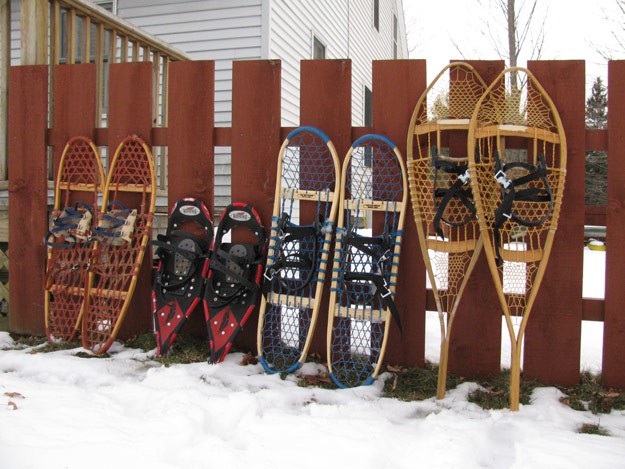
When you are ready to begin shopping for snowshoes, first consider how you will use them.
- What are the conditions where you live? Are you likely to have a foot or more of fresh powder? Is your snow often sticky and slushy? Maybe just a few inches at a time?
- Will you be forging your own trails, using trails packed by other snowshoers, following trails created by snowmobiles or dog sleds or groomed by machine?
- How often will you be using them? Will their purpose by mostly recreational utilitarian, or competitive?
- What is the terrain in your area—steep and mountainous, flat, rolling hills, open, or heavily wooded?
It is also a bad idea to consider your own level of physical fitness and user experience, although neither of these are as crucial factors as they might be in other activities.
You will find that snowshoes range from very small to very large, inexpensive to fairly pricey, made of everything from aluminum to hard plastic to vinyl to wood to leather.
Snowshoe Size Consideration
Generally, the bigger you are and the deeper the snow in which you plan to navigate, the bigger your snowshoes need to be. Conversely, you will need to keep your snowshoe size to a minimum in order to negotiate narrow pathways through trees and undergrowth. People who are short-statured or older need to keep in mind that wider snowshoes can be harder on their hips.
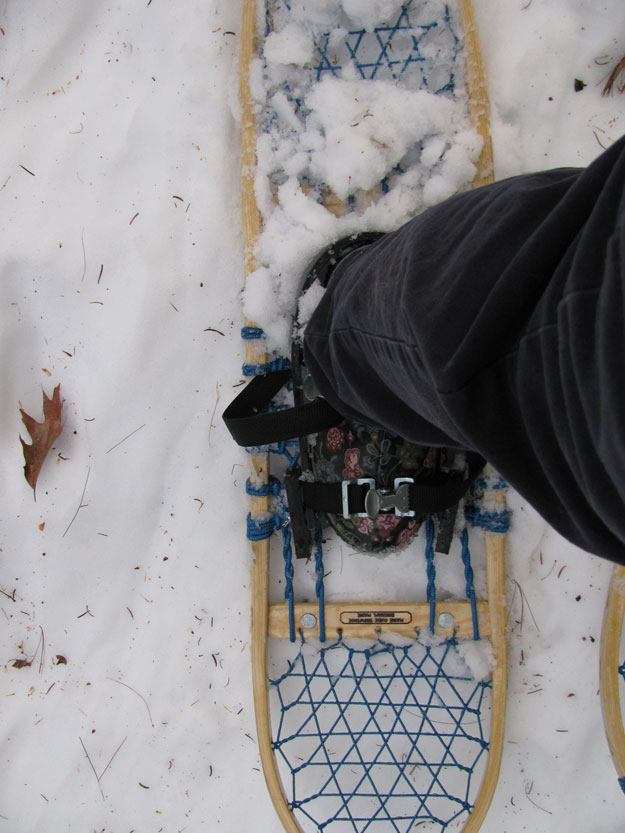
At 5-foot-one and in my fifties, my go-to's are ten inches wide by 36 inches long. I also occasionally use a much smaller pair, and a pair of larger ones, for specific conditions.
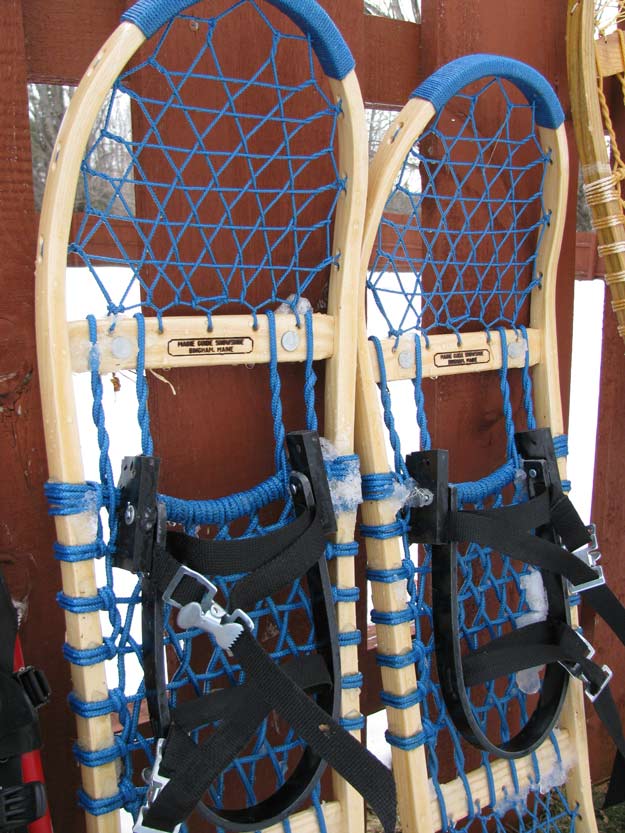
You can get away with much smaller models on packed trails, and will need larger ones in more backwoods conditions. Recreational snowshoes will be smaller and lighter than utilitarian types, and racing styles are often smaller still but surprisingly heavy.
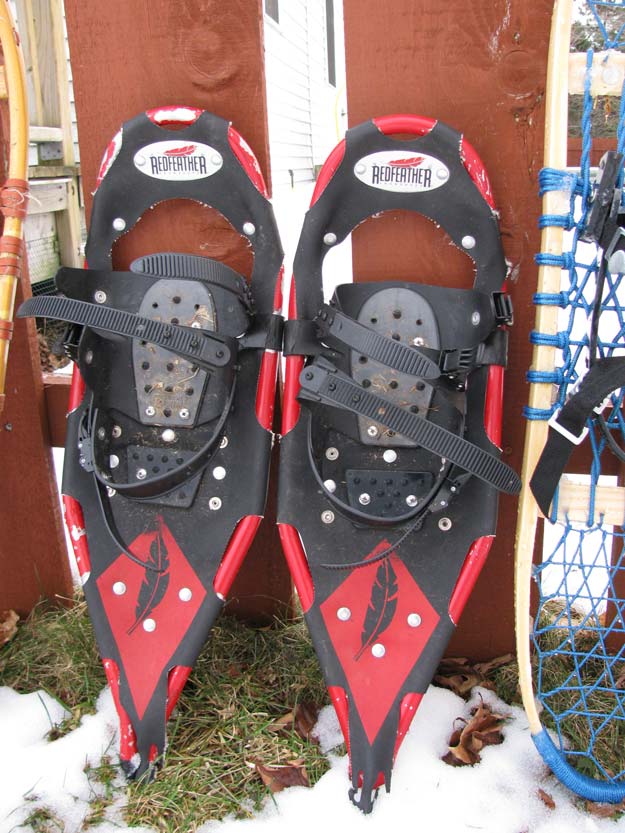
Snowshoes Material Consideration
Many experts will tell you that modern aluminum frames with vinyl decking is best. Others in the know will say that traditional wood frames with knotted decking is superior. It's a little like trying to decide between makes of cars—each one has fans and detractors, has plenty of pros and cons, and in the end you just have to pick one and try it.
I have both. I have some very small aluminum-vinyl models that I use for low snow and hard-packed trails. They are great for a quick run out to check sap buckets or a fast jaunt around the field with the dog for her nightly after-supper “business” walk. For everything else, I use my handmade traditional models, which give me excellent flotation and super comfort.
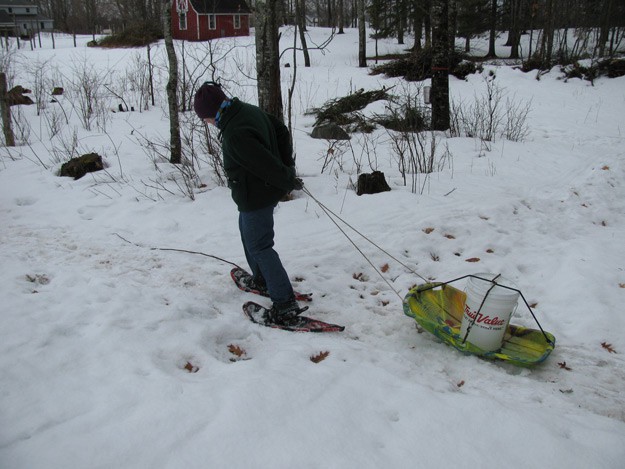
Snowshoeing Styles
Snowshoes with long tails are generally designed for deep snow flotation. Upturned tips are a must, and upturned rears are a nice bonus that adds to maneuverability.
Additional Snowshoeing Considerations
Most modern snowshoe models come with crampons. Some are super aggressive, perfect for ice and steep inclines. Others do no come with them, or are optional. If you use your snowshoes mostly on fluffy snow, crampons aren't as important. If your terrain is hilly, you'll need them.
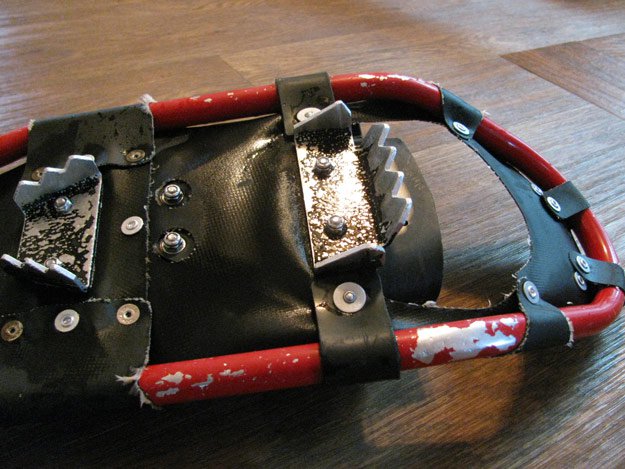

Snowshoe Bindings
Most experienced snowshoers I have talked with agree—it's all about the bindings. They have to work well by tightening up and holding your foot in place adequately, remain comfortable at all times, and loosen up enough to kick your feet out of them when you're done. Functionality is very important, they have to be user-friendly.
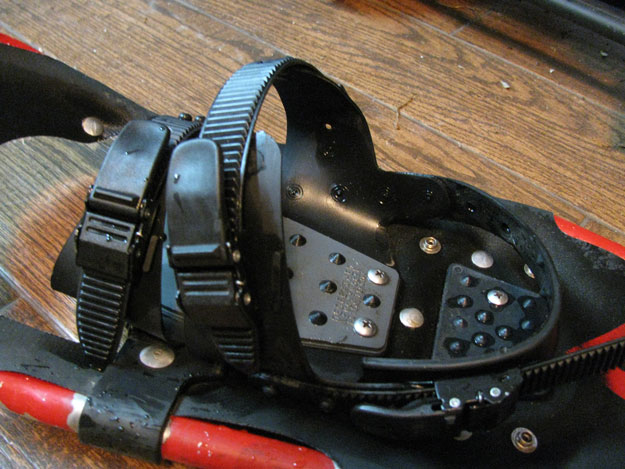
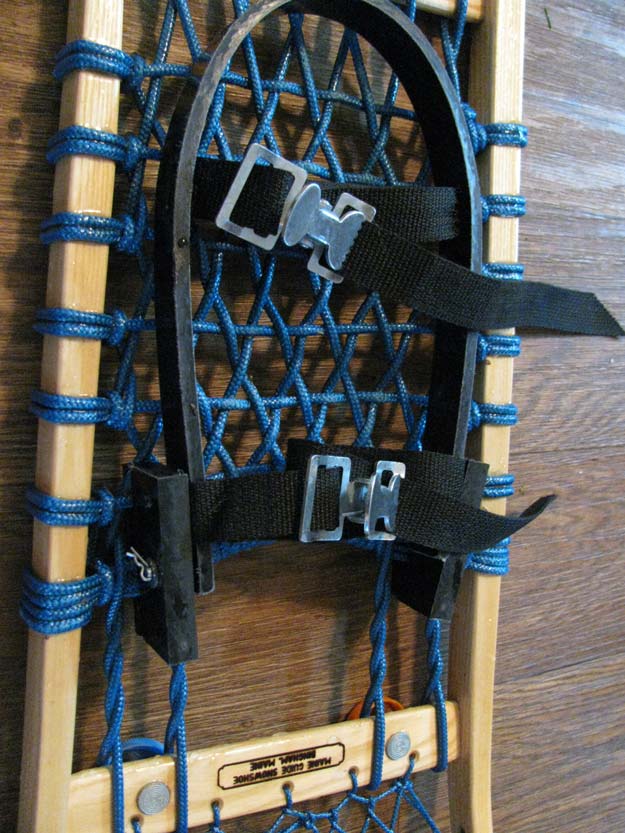
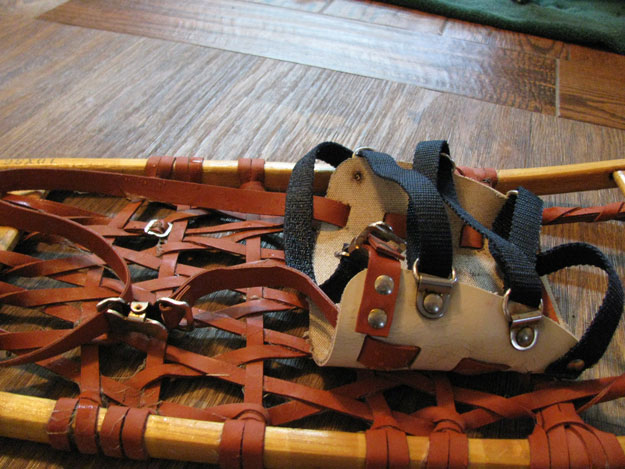
If you can't get a comfortable fit without a lot of hassle with the bindings, factors like size and materials won't matter—because they'll spend the winter in the closet.
My husband has some beautiful snowshoes that he made himself at a workshop many years ago. They had old-fashioned bindings made of leather and buckles, and didn't see much use except for after big snowstorms when their large size was necessary. That is, until a few years ago when we bought new easy-on-easy-off bindings for them. Although the tips have flattened out with age making them less than ideal in that regard, our old snowshoes with the new bindings are now the ones he reaches for first.
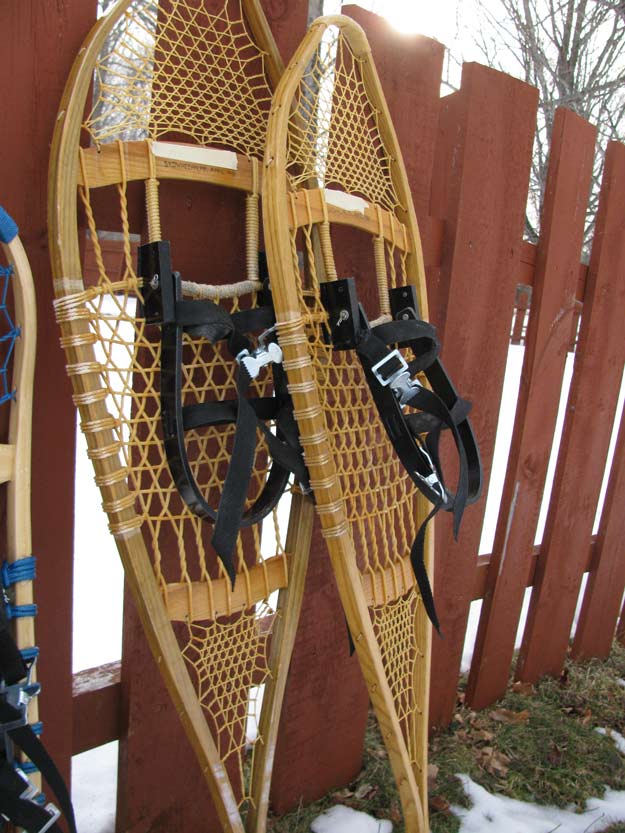
There are as many different styles and materials of bindings as there are people to buy them, and no one type is perfect for every snowshoe user. I encourage you to try fastening and unfastening them several times before you buy—with your feet in the snowshoes, leaning over, like you would if you were actually headed out for or returning from a snowshoe trek.
It is really important to imagine how the bindings will act in winter. As obvious as that sounds, I am not convinced that all snowshoe manufacturers consider factors such as cold and snow. Ratchets that work perfectly inside the store can slip out of control in sub-freezing temperatures. One-piece canvas bindings designed to slide through D-rings can get iced up and refuse to budge.
I am a strong advocate of buying local, and nothing makes more sense that buying snowshoes that were made by people who live in your region, for use in your region.
I am a strong advocate of buying local, and nothing makes more sense that buying snowshoes that were made by people who live in your region, for use in your region. Not only will they be able to advise you on your particular needs and conditions, but they may well be willing and able to help you get a custom fit. My favorite pair was handmade at a Maine wilderness lodge, by people who wear them in real conditions every day.
Not everyone has snowshoe-makers in the backyard. If you don't have any locally-made options, it is still a great idea to buy them from a small shop which will help find the perfect fit and style.
If you buy from a big box store or online, it is possible for you to be happy with the results, particularly if you have snowshoeing experience and know exactly what you are looking for. And even if they aren't quite what you hope for, it may not matter if you plan to use your snowshoes only once or twice a year.
Considering The Cost of Snowshoes
As with any purchase, spending more money for something you will really use a lot may be justifiable, but shelling out a lot of cash for items you'd use only occasionally might not be. I wear snowshoes six or seven days a week for the whole winter season—and where I live, that's often Thanksgiving to Easter. For most of the winter I use them for two outings a day—one long and one short—but during maple syrup season I may use them several times a day. In addition to regular outings and tending maple trees, I wear snowshoes while harvesting trees for livestock consumption and for other utilitarian uses. Consequently, I am willing to spend what it takes to buy good snowshoes, but that might not be the case for you.
To recap, there are several points to consider. Size, style, materials, crampons, and bindings are all worth evaluating, and it is important to get the correct ones for you and your conditions. Service after the sale is valuable as well, as is buying local if at all possible. Cost, too, is a factor.
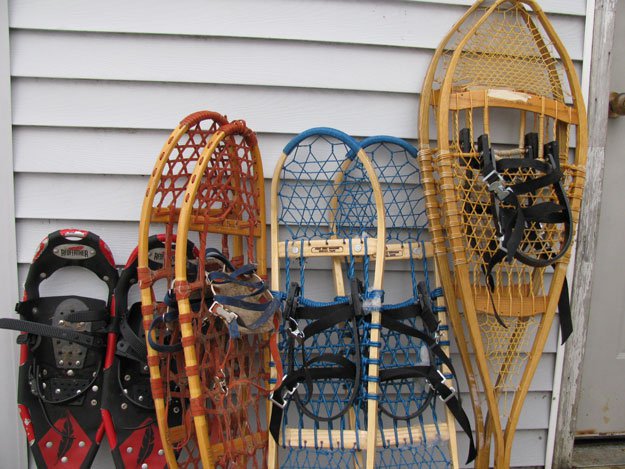
Emphasis on BINDINGS. You may have to compromise on one factor to get what you want for another—such as smaller crampons than you wanted in order to get the snowshoe length you need, or a little higher price in order to get the materials you like—but you do not want to compromise on bindings. They need to work well, be user friendly, and maintain their efficiency in cold and snow.
These tips can help you get into a great pair of snowshoes, get you outside, and keep you active. And if that brings great happiness to your winter, it's a win all around.
Need a little snowshoeing 101? Check out this video from Faber-Snowshoes Raquettes:
What pair of snowshoes work best for you? Let us know in the comments!


[…] post Snowshoes Guide appeared first on Homesteading Simple Self Sufficient Off-The-Grid | […]